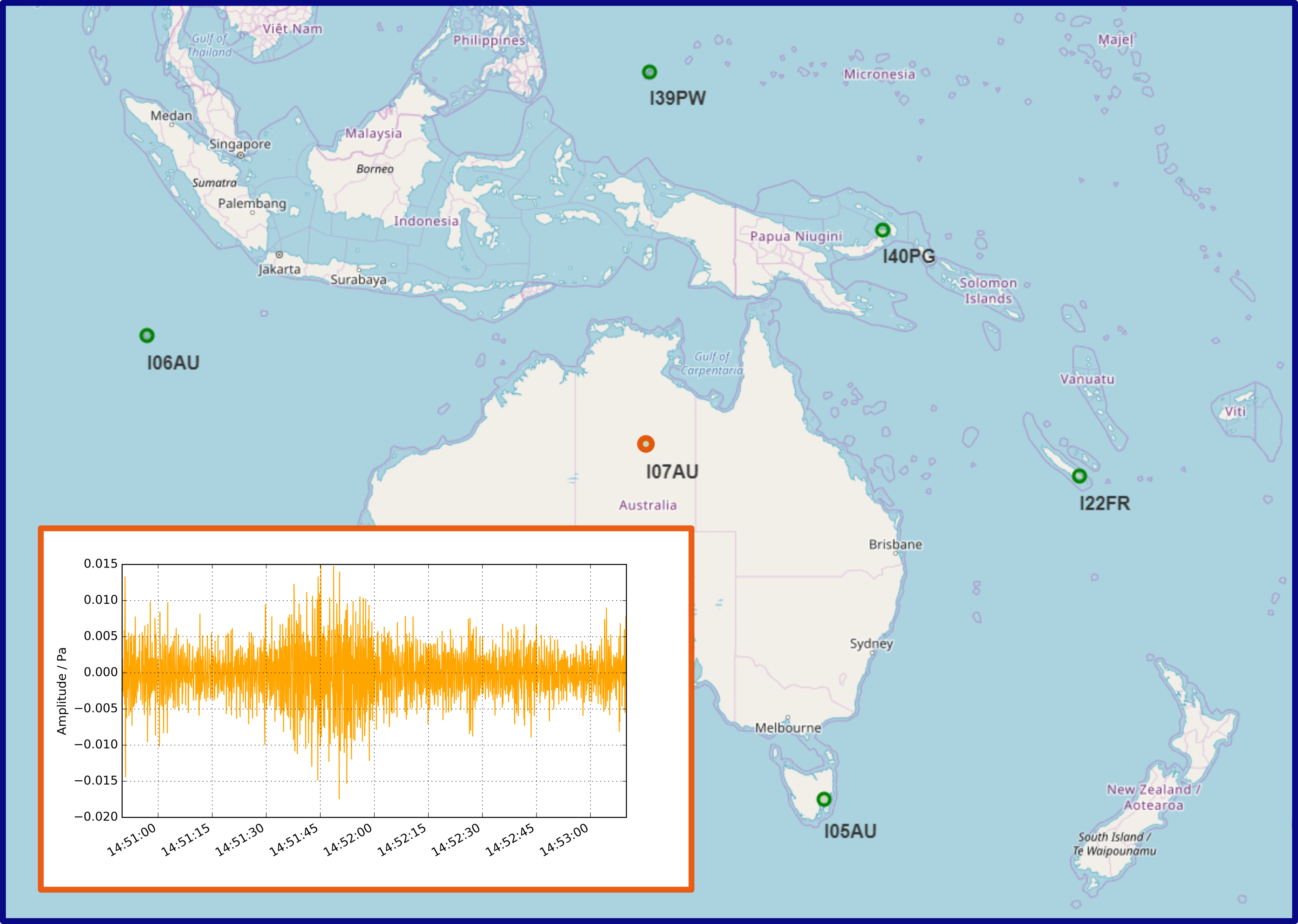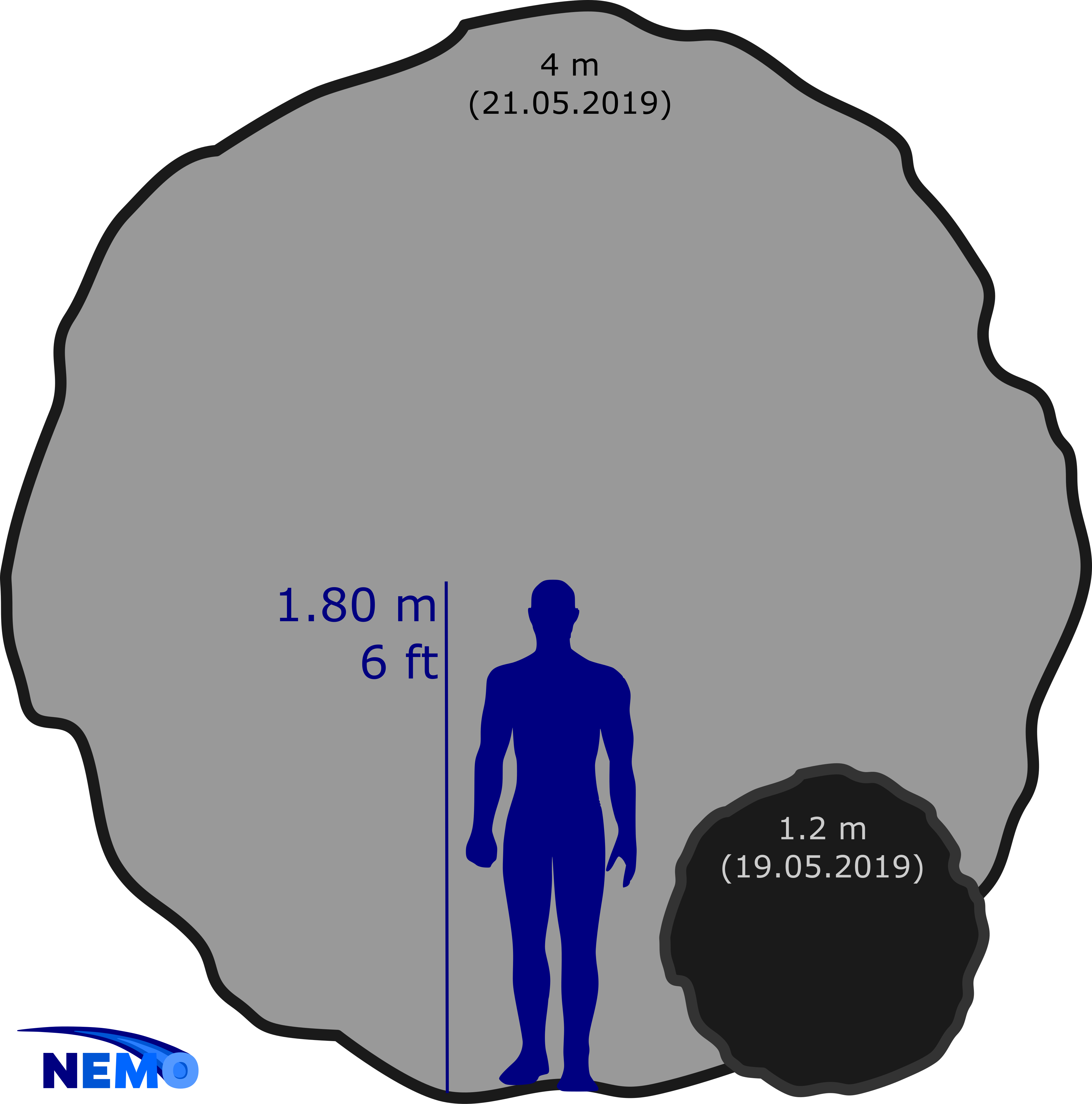In the night from Sunday to Monday Australians could observe a large fireball in Central Australia!
The time is estimated at around 00:20 ACST (19.05.2019 at 14:50 UT) with a very visible flash that was captured on multiple cameras from Northern Territory.
The Australian Fireballs in the sky network reports app sightings and places the fireball at -23.69, 133.86 with a slightly different time.
The asteroid had such a high energy that it created such a high pressure change in the atmosphere that it was even picked up by infrasound stations. We looked at the closest stations of the International Monitoring System of the Comprehensive Nuclear-Test-Ban Treaty Organisation and found four that recorded a strong signal. One Australian station was only a couple tens of km away from the entry point.
We were able to calculate a preliminary source energy of 60 t TNT. With an assumed velocity of 14 km/s and a density of 3000 kg/m^3 the size would be 1.2 m diameter, which places the entering object in the asteroid range.
The asteroid’s energy is almost two times higher than that of the most powerful conventional bomb in the world – the Russian Father of All Bombs (FOAB).

Update
Only one night later a second fireball was recorded over Southern Australia and caught by various cameras. This fireball was even brighter, the entering asteroid had a size of about 4 m!
We were able to derive this size from the signal of 6 infrasound stations. The estimated source energy is 1.4 kt TNT. Both fireballs were detected with US government sensors, which published energies of 0.11 kt TNT for the first fireball and 1.6 kt TNT for the second one. The velocities reported on their page are 15.2 km/s and 11.5 km/s, respectively.

So far there are no reports in the IMO database. Let’s change that!
If you witnessed one of these event and/or if you have a video or a photo of this event, please
Submit an Official Fireball Report
(available in 36 languages)
If you want to learn more about Fireballs: read our Fireball FAQ.




 You saw something bright and fast? Like a huge shooting star? Report it: it may be a fireball.
You saw something bright and fast? Like a huge shooting star? Report it: it may be a fireball.  You counted meteors last night? Share your results with us!
You counted meteors last night? Share your results with us!  You took a photo of a meteor or fireball? You have a screenshot of your cam? Share it with us!
You took a photo of a meteor or fireball? You have a screenshot of your cam? Share it with us!  You caught a meteor or fireball on video? Share your video with us!
You caught a meteor or fireball on video? Share your video with us!
One comment
Thank you for your good work with this subjekt!